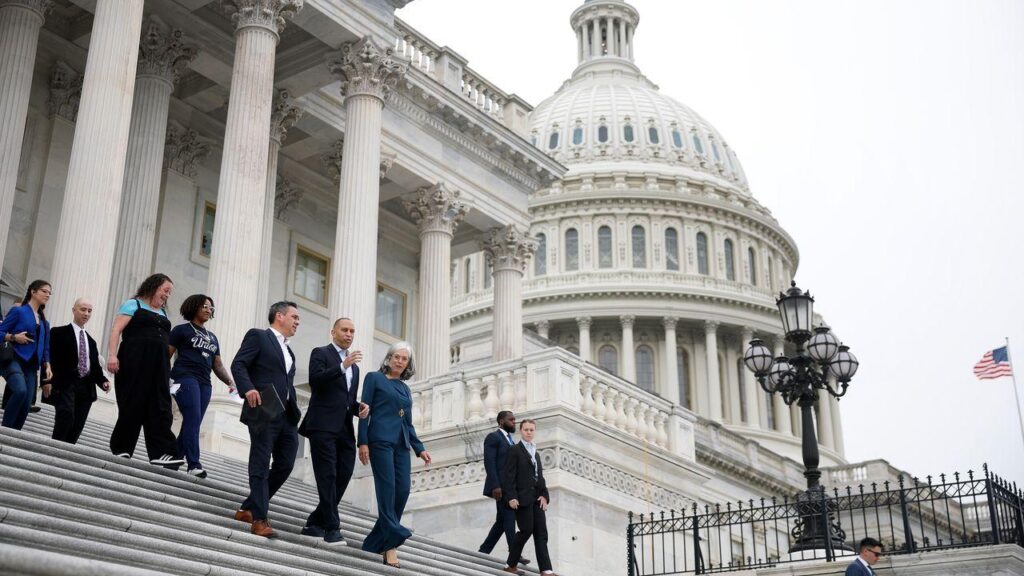As government operations come to a halt amid a funding impasse, critical programs providing food aid and public health services face mounting uncertainty. The shutdown threatens to disrupt assistance for millions of Americans relying on nutrition support and essential healthcare, raising concerns about increased food insecurity and strained public health resources. KPBS examines the immediate and long-term implications of the government shutdown on these vital services, highlighting the challenges for vulnerable communities nationwide.
Impact of Government Shutdown on Food Assistance Programs and Vulnerable Communities
Food assistance programs are among the first to feel the strain during a government shutdown. Essential services such as the Supplemental Nutrition Assistance Program (SNAP) face disrupted funding, causing delays in benefits distribution to millions of low-income families. Many local agencies rely heavily on federal allocations to operate food banks and community kitchens, meaning shutdowns can lead to reduced hours and limited access to nutritious meals. Vulnerable populations, including children, seniors, and individuals experiencing homelessness, bear the brunt of these cuts, exacerbating food insecurity and public health concerns.
The impact extends beyond immediate hunger relief, influencing long-term community health outcomes. Public health officials warn of rising risks associated with malnutrition, including chronic illnesses and weakened immune systems. The ripple effects include increased healthcare costs and strain on social services. Key challenges include:
- Interrupted SNAP payments that leave families scrambling for resources
- Suspension of school meal programs, affecting millions of children missing vital nutrition during closures
- Reduced support for emergency food providers, limiting distribution of groceries and hot meals
| Program | Shutdown Effect | Vulnerable Groups Affected |
|---|---|---|
| SNAP | Delayed benefit issuance | Low-income families, elderly |
| WIC (Women, Infants, Children) | Restricted clinic operations | Pregnant women, infants |
| School Meal Programs | Meal service interruptions | Children in low-income households |
Challenges Faced by Public Health Services Amid Funding Gaps
Public health agencies across the nation are grappling with severe limitations as funding shortfalls disrupt essential services. Clinics and community health programs face staff reductions and operational delays, hampering efforts to respond swiftly to outbreaks and manage chronic disease prevention. The ripple effect extends to food aid initiatives, where delays in fund disbursement threaten the continuity of nutrition assistance programs that millions rely on daily.
Key impacts include:
- Suspension of non-emergency health outreach and education campaigns
- Reduced capacity in testing, vaccination, and health monitoring
- Interruptions in food stamp (SNAP) benefit distribution and eligibility verification
- Increased workload and burnout among public health workers due to stretched resources
| Service | Status During Funding Gaps | Potential Consequence | |||||||||
|---|---|---|---|---|---|---|---|---|---|---|---|
| Vaccination Programs | Limited outreach; delays in distribution | Increased vulnerability to preventable diseases | |||||||||
| Food Assistance | Processing delays; benefit suspension risks | Heightened food insecurity among low-income families | |||||||||
| Health Education | Strategies for Mitigating Disruptions in Food Aid During Government Downtime
Ensuring continuity of food aid during periods of government inactivity requires proactive collaboration between federal agencies, state governments, and community organizations. Contingency planning is pivotal, involving pre-established agreements that allow local nonprofits and food banks to draw on emergency funds or supplies independent of federal disbursements. This buffer strategy reduces the risk of immediate shortages when government processes freeze. Additionally, implementing real-time data sharing platforms helps track inventory levels, distribution bottlenecks, and vulnerable populations, enabling quicker, targeted responses even amid bureaucratic slowdowns. Community engagement and decentralized operations become critical under these circumstances. Grassroots networks often step into the breach, but to optimize their impact, they require clear communication channels and logistical support. The following table outlines key strategic pillars and their associated actions for minimizing food aid disruption during government downtimes:
Wrapping UpAs the government shutdown persists, the impacts on food aid programs and public health services remain a pressing concern for millions of Americans. Delays in funding and resource allocation threaten to exacerbate food insecurity and strain healthcare systems that many vulnerable populations rely upon. Policymakers face mounting pressure to reach an agreement and restore critical support before the consequences deepen. KPBS will continue to monitor the situation and provide updates on how this shutdown affects communities across the nation. |
